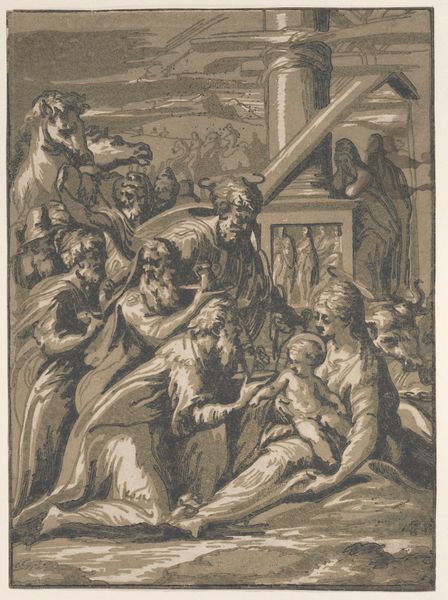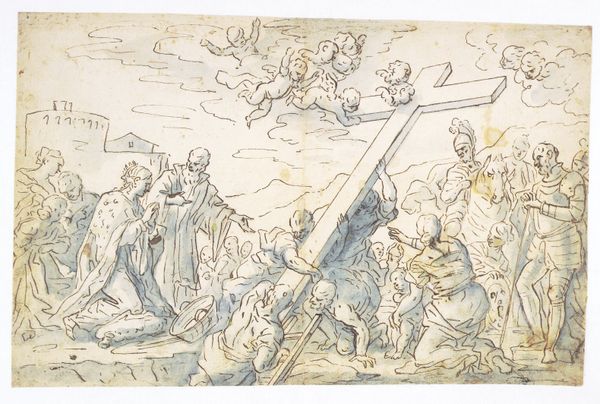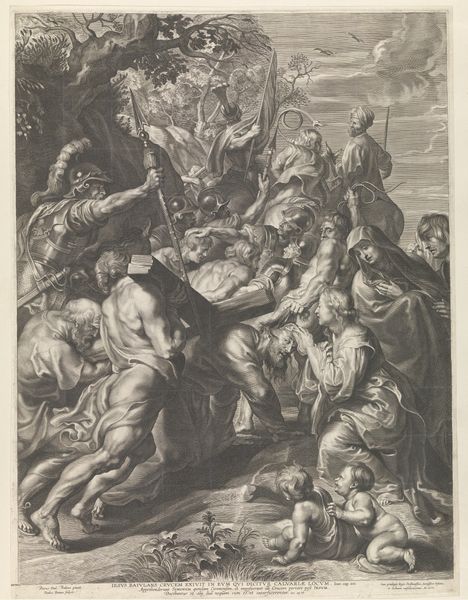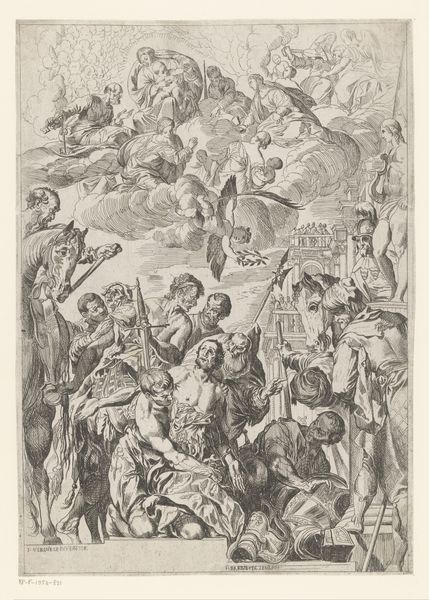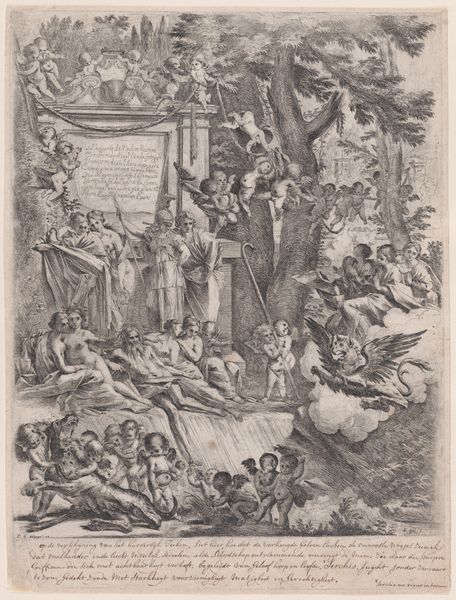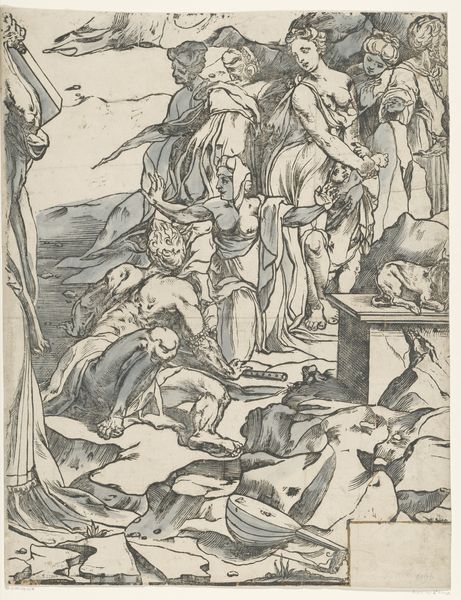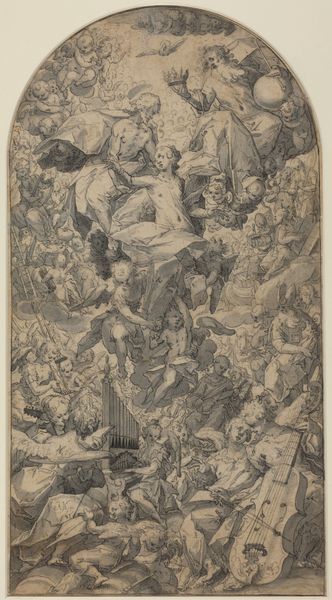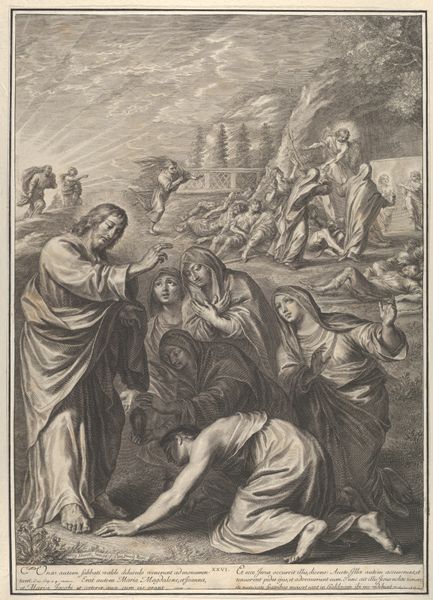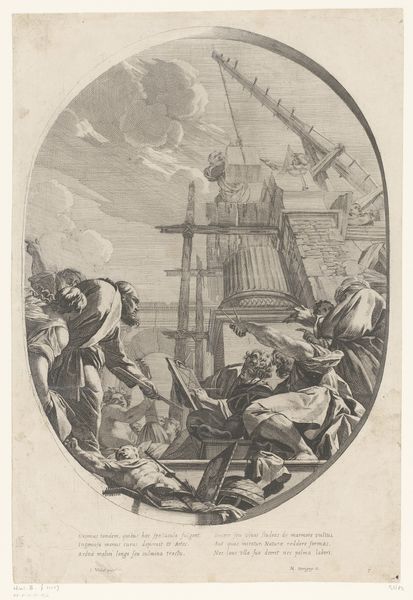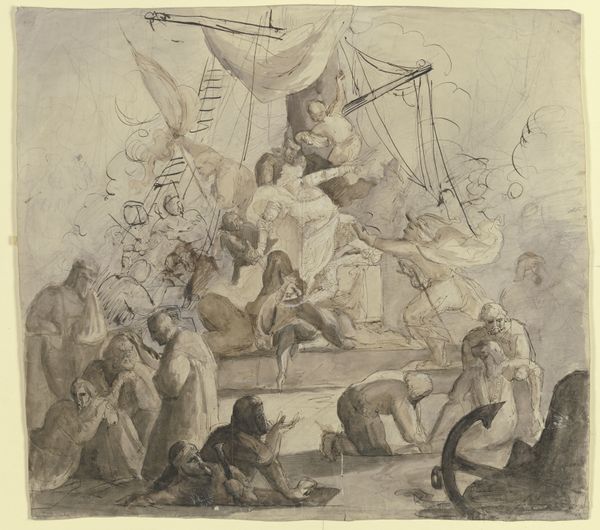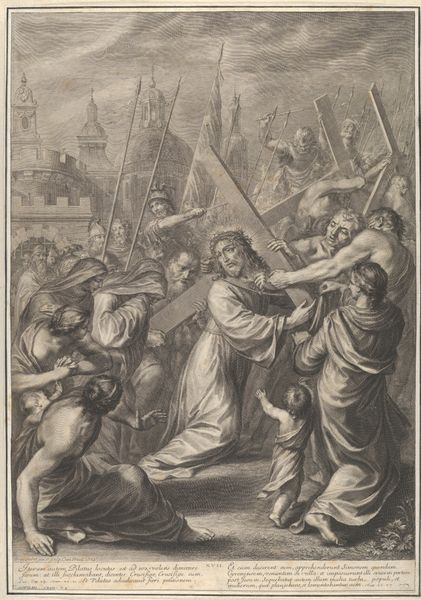
drawing
#
drawing
#
toned paper
#
pencil sketch
#
incomplete sketchy
#
possibly oil pastel
#
fluid art
#
coloured pencil
#
underpainting
#
watercolour illustration
#
pencil art
#
watercolor
Dimensions: overall: 28.9 x 19.8 cm (11 3/8 x 7 13/16 in.)
Copyright: National Gallery of Art: CC0 1.0
Curator: What strikes you first about this drawing, labeled "The Adoration of the Magi" by Georg Anton Urlaub from 1756? To me, the muted tones and sketchy quality convey a sense of the provisional, like a fleeting moment captured mid-thought. Editor: It feels... theatrical. A very dramatic staging of a story. I see so much jostling for position, which almost upstages the purported subject. Who has the power in this image? It is not immediately clear. Curator: Urlaub was operating within the conventions of the late Baroque. Such dynamic compositions, often playing with chiaroscuro, were intended to evoke piety through drama. Editor: And yet, the fluidity resists the dogma. Note the way he allows forms to dissolve and reappear. Does this reflect shifting social structures of the period, maybe tensions between established religion and the burgeoning Enlightenment thought? Are the Magi truly reverent, or simply participants in a performance of reverence for courtly or societal advancement? The composition has very stage-like qualities which imply an audience both external and within the artwork. Curator: That’s a sharp observation. Looking at the context in which it was made reveals a lot about Urlaub's place as court painter and the art market of the time. How the rise of absolutism manifested in religious imagery and secular art through commissions becomes apparent. Urlaub, being supported by elite patronage, was then responsible for manifesting propaganda. Editor: Precisely! The radiant star, less a symbol of divine guidance than an aggressively spotlighting presence. Perhaps it critiques, inadvertently or otherwise, this power. Who directs that light, and to what ends? In examining these power dynamics, what questions can we ask about marginalization of women and children in religious institutions represented here in service of empire building? Curator: Indeed. The politics of imagery and the public role of art are intertwined. The way he uses watercolor and pencil sketch to play with light could suggest many meanings including the idea that nothing is fixed or permanent in faith. Editor: So, from tentative strokes emerges a complex image, deeply embedded in a world undergoing radical changes and making us look closely. Curator: By considering Urlaub's drawing in the social, cultural and religious historical context, we see it less as a straightforward depiction and more as an object situated in that context and something that invites questioning of power.
Comments
No comments
Be the first to comment and join the conversation on the ultimate creative platform.

